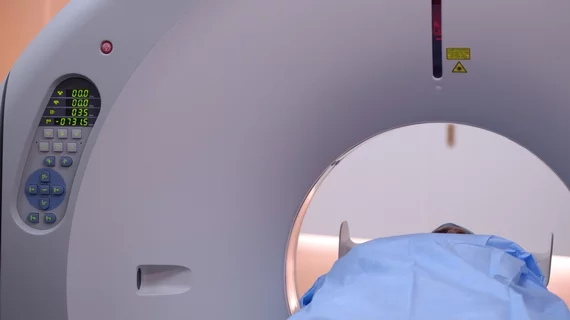Head CTs could present an opportunity to screen for osteoporosis
Computed tomography brain scans could present an opportunity to proactively screen for signs of osteoporosis, especially for female patients, a new analysis suggests.
Around one in every 10 people 50 and older in the U.S. have osteoporosis, putting them at increased risk of sustaining serious fractures. According to the Centers for Disease Control and Prevention, the risk of a man with osteoporosis fracturing his femur or lower back is just over 4%, but for women with the condition, the risk is significantly higher at almost 19%.
However, if caught early, there are treatments available that can help patients avoid fractures. DEXA, also known as a bone density scan, is the standard for diagnosing osteoporosis. Although these exams are quick, easy and relatively accessible, not everyone who is at risk completes them, putting their bone health at risk.
In individuals who have not completed one, head CT conducted for other reasons can offer providers an opportunistic glance at patients’ frontal bone density, which could be a marker of osteoporosis, a new study published in Skeletal Radiology suggests.
“Osteoporosis and falls are both prevalent in the elderly, and CT brain is frequently performed post head-strike,” corresponding author Dee Zhen Lim, MD, with the department of radiology at Austin Health in Australia, and colleagues noted, adding that metrics of frontal bone density have not yet been well studied within the realm of osteoporosis.
Using ANOVA, Pearson’s correlation, and receiver operating curve (ROC) analysis, experts examined the relationship between frontal bone density on head CT and bone mineral density from DEXA scans for more than 300 patients who had undergone both within a year of each.
The ANOVA analysis showed decreased frontal bone density for patients with DEXA-defined osteoporosis, but the Pearson’s correlation analysis showed relative agreement between both scans. However, this was only true for females.
On ROC analysis, frontal bone density was not indicative of osteoporosis except at a threshold of greater than 1,200 Hounsfield units, but again, only in females.
Although the study’s results do not offer complete clarity on whether head CT scans can be utilized as a screening opportunity, the authors suggested that the finding regarding the differences in frontal bone density in women warrants further investigation.
The study abstract can be found here.

